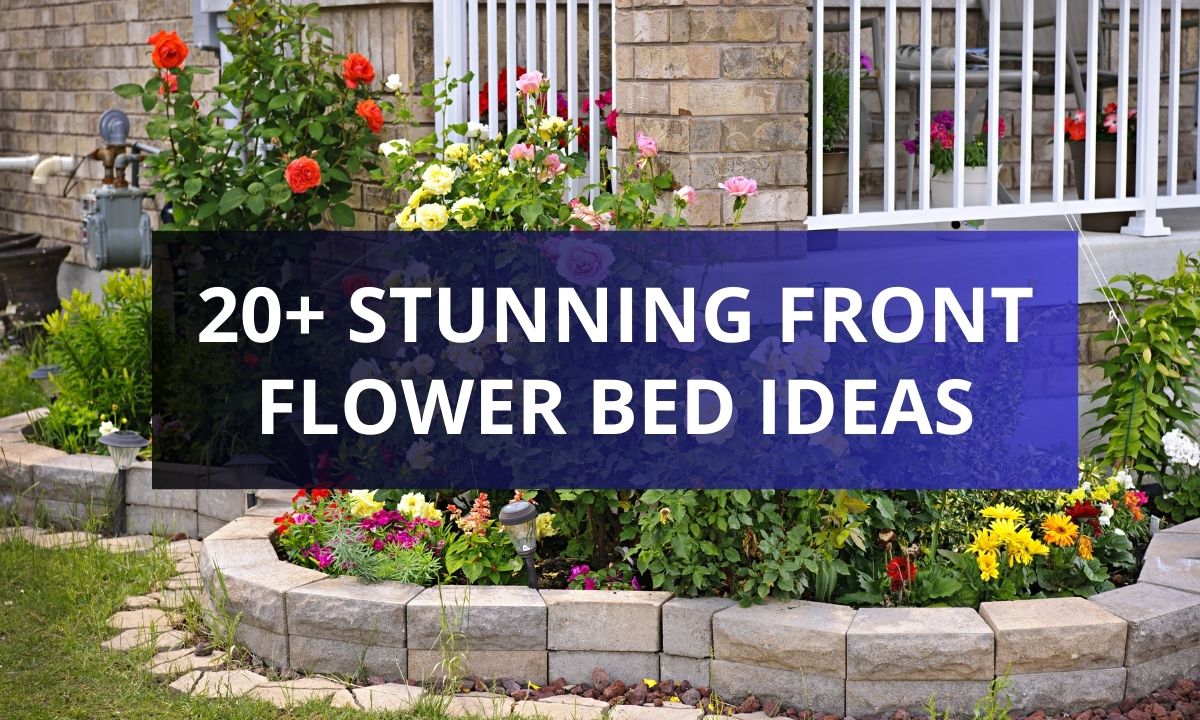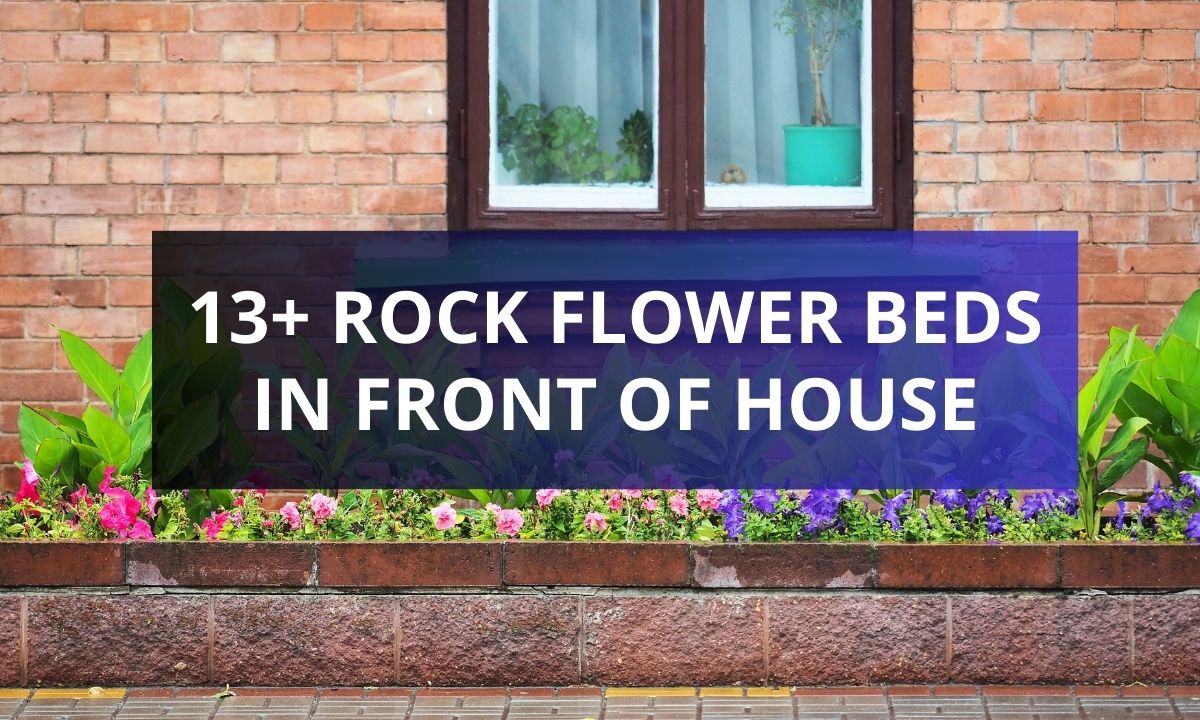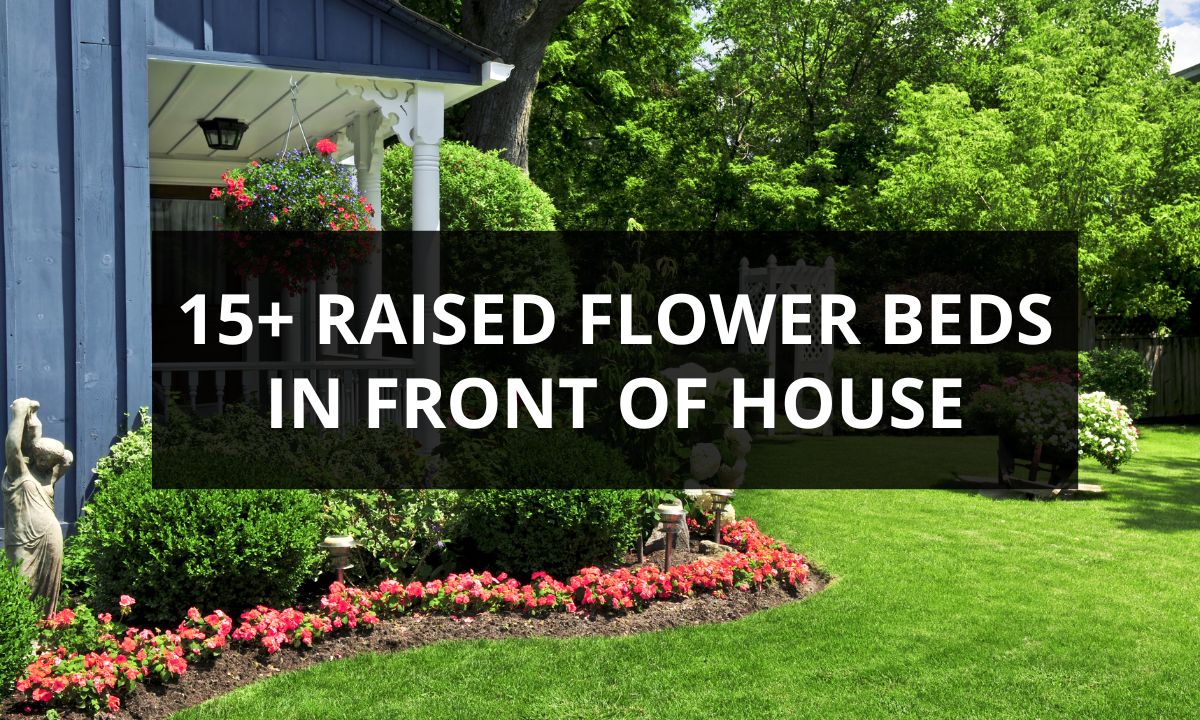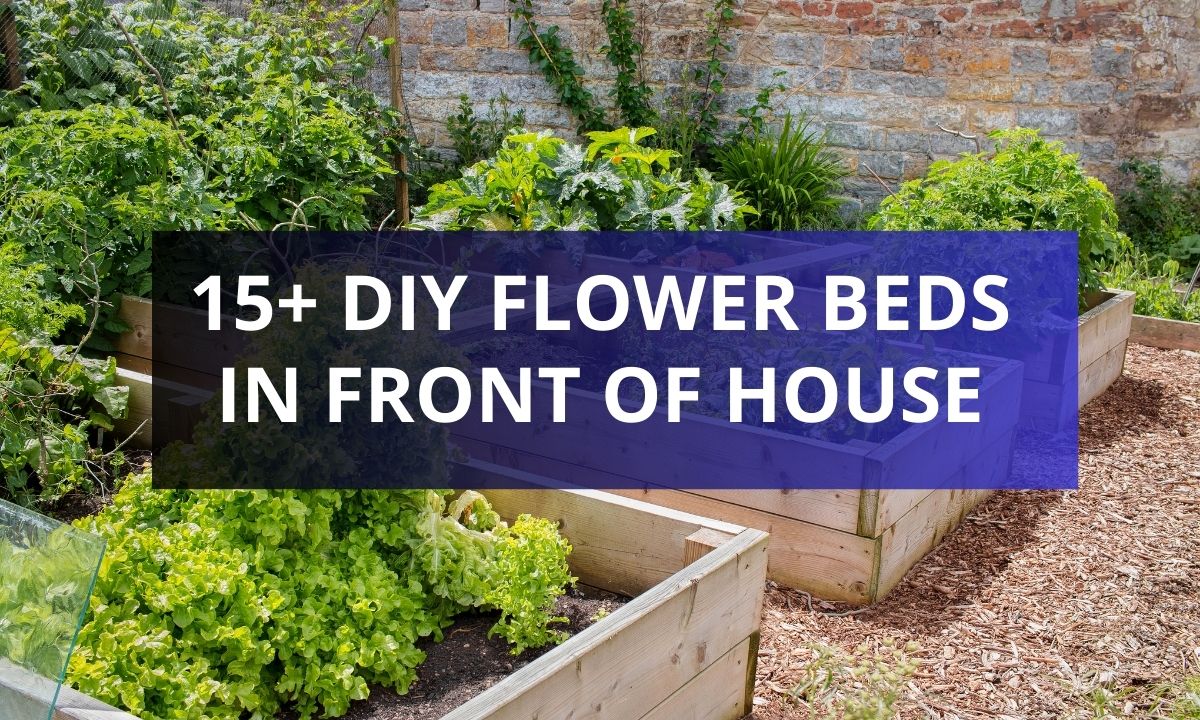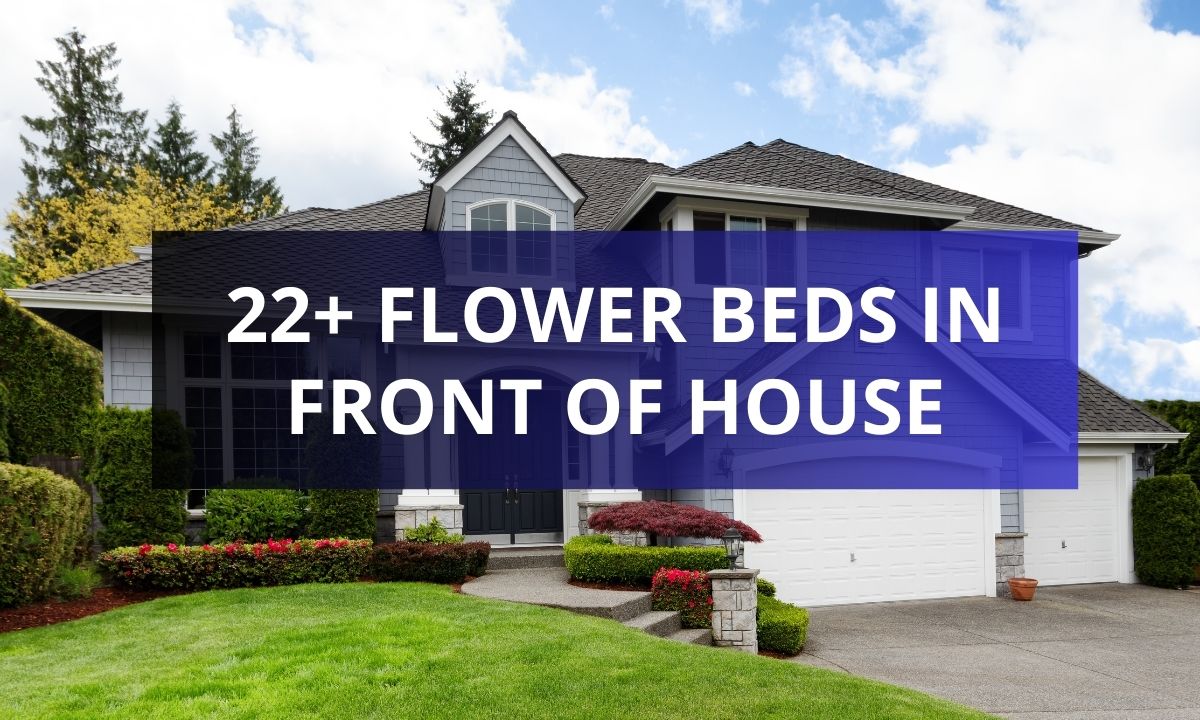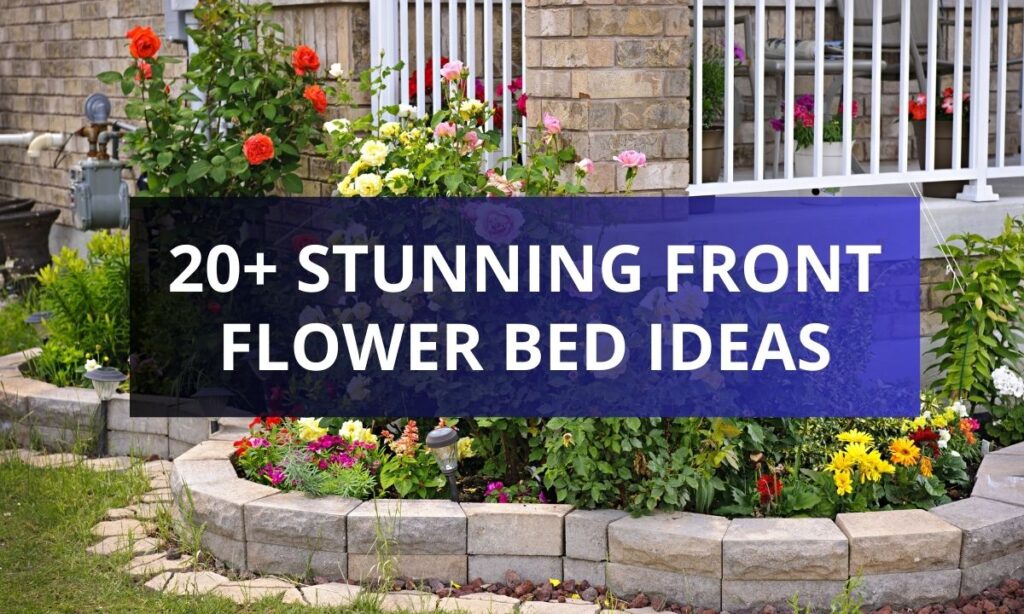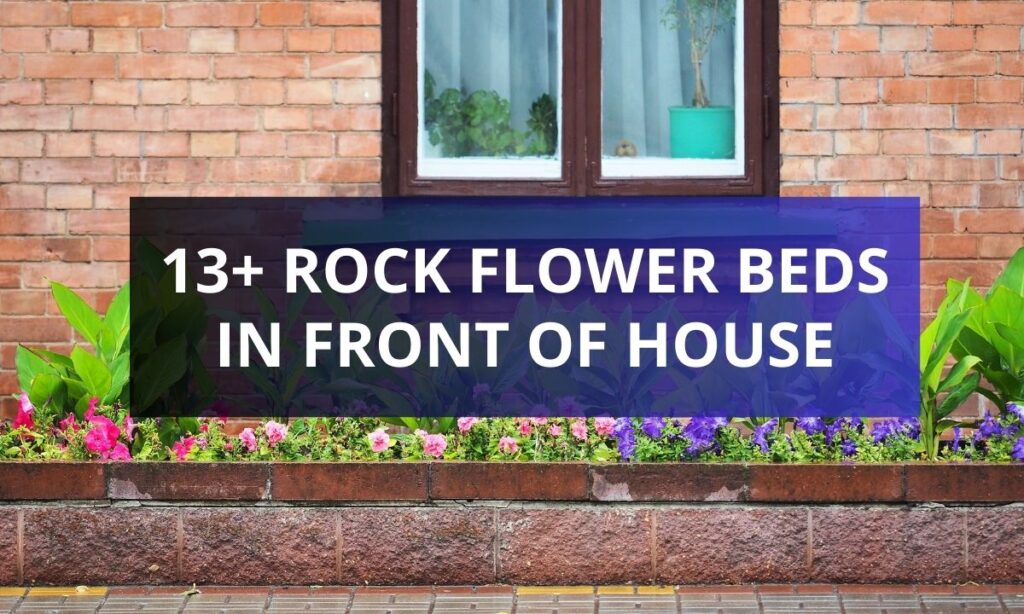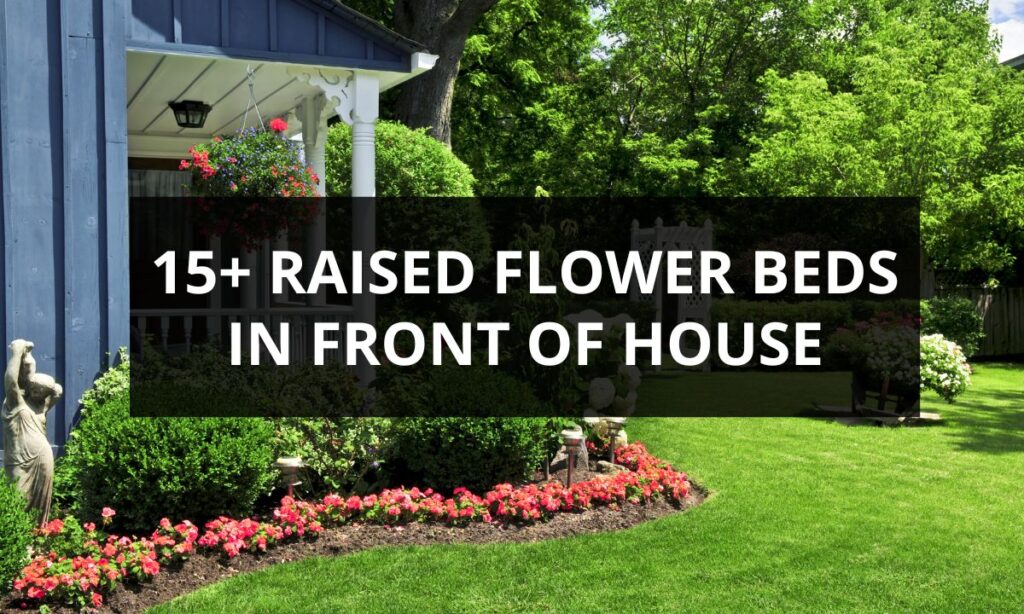Check out these homesteading garden layout ideas that will help you make the most of your space while growing fresh produce and beautiful plants. Whether you have a small backyard or a sprawling plot, there’s something here to inspire you!
Table of Contents
- Succession Planting Techniques
- Vertical Gardening Solutions
- Herb Spiral Construction
- Permaculture Garden Design
- Raised Bed Gardening Techniques
- Container Gardening for Small Spaces
- Companion Planting Strategies
- Edible Landscaping Ideas
- Square Foot Gardening Basics
- Pollinator-Friendly Garden Design
- Shade Garden Opportunities
- Garden Zones for Efficient Layout
- Wildlife-Friendly Garden Features
- Keyhole Garden Approach
- Seasonal Rotation Layout
- Kitchen Garden Essentials
- Backyard Orchard Planning
- Community Garden Collaboration
- Low-Maintenance Garden Design
- Garden Pathway Inspiration
Succession Planting Techniques
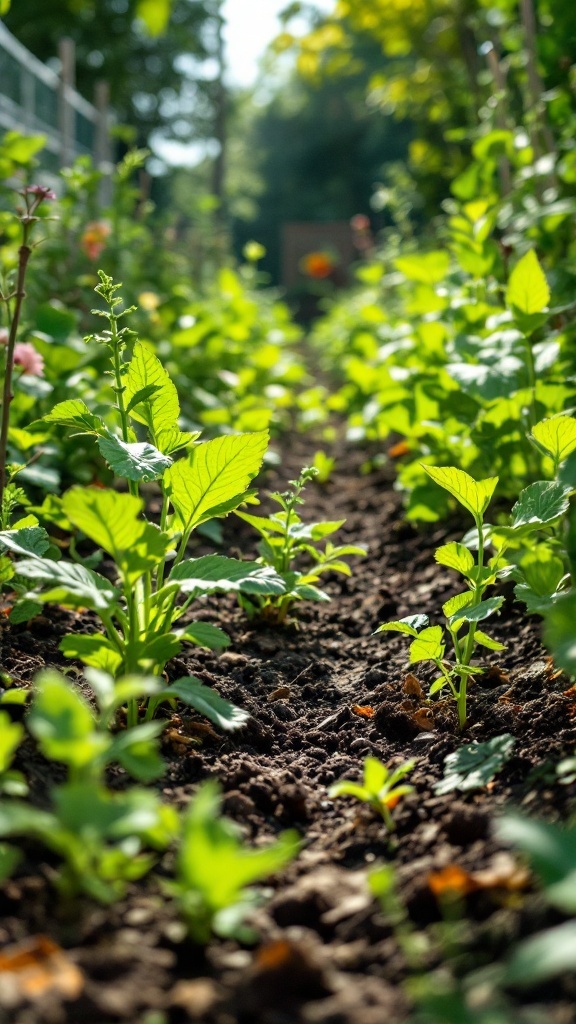
Succession planting is a smart way to keep your garden productive throughout the growing season. In the image, you can see young plants thriving in neat rows, showcasing this technique in action. By staggering your planting times, you can enjoy fresh produce for a longer period.
To get started, think about your favorite vegetables. For instance, if you plant lettuce, follow it up with a crop of radishes a few weeks later. This method maximizes space and keeps your garden looking vibrant.
Observe your garden closely. When you harvest one crop, plant another right away. This ensures that you always have something growing. The young plants in the image highlight the beauty of fresh starts.
Don’t forget to plan your planting schedule! Keeping track of what you plant and when can help you rotate crops efficiently. This practice can lead to healthier plants and a more fruitful garden.
Vertical Gardening Solutions
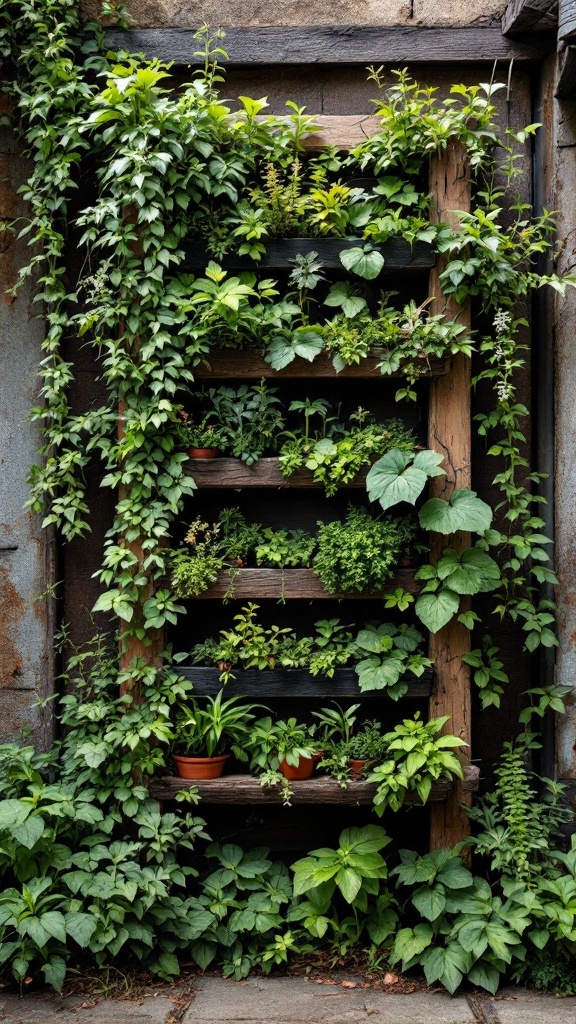
Vertical gardening is a clever way to maximize space while adding beauty to your garden. This image shows a wooden structure filled with lush greenery, showcasing various plants cascading downwards. The arrangement not only looks appealing but also makes the most of limited space.
This kind of setup works great for herbs, vegetables, or flowers. By going vertical, you can create a vibrant garden even in small areas. It’s perfect for urban settings where ground space is hard to come by.
Using shelves or trellises allows you to keep plants organized and accessible. You can easily reach for fresh herbs while cooking or admire your flowering plants. Plus, vertical gardening can enhance airflow and sunlight exposure, helping plants thrive.
Herb Spiral Construction
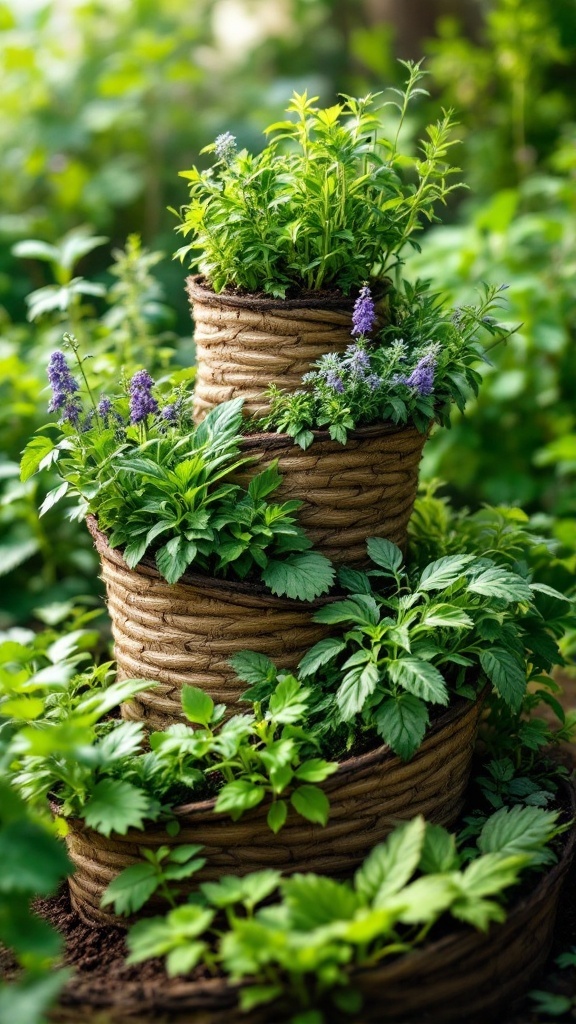
Creating an herb spiral is a fun and practical way to utilize vertical space in your garden. The image shows a beautifully crafted spiral, featuring lush herbs at various heights. This design not only looks attractive but also maximizes sunlight and water usage.
The spiral construction typically consists of stacked natural materials like stones or wood, which can hold soil and plants. The shape allows for different microclimates, making it perfect for growing a variety of herbs. Each level can accommodate herbs that thrive in different conditions, such as moisture or sunlight.
When planning your spiral, think about the herbs you love most. Basil, mint, and rosemary are popular choices. As you build, remember to ensure proper drainage to keep your herbs healthy and happy. This unique layout encourages biodiversity and can attract beneficial insects.
Overall, an herb spiral adds charm to your garden while providing fresh herbs on hand for cooking. It’s practical, sustainable, and a great conversation starter among fellow homesteaders.
Permaculture Garden Design
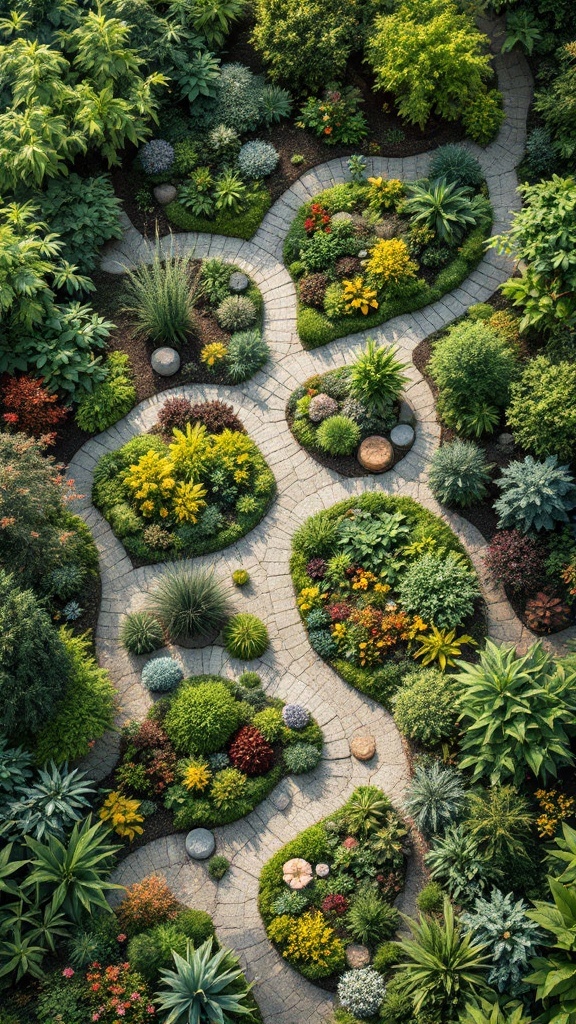
Permaculture garden design focuses on creating sustainable and self-sufficient ecosystems. This image showcases a beautifully arranged garden that embodies these principles. The winding pathways invite you to explore various plant beds, each filled with a diversity of colors and textures.
Notice how the layout promotes natural growth patterns. The different plant species coexist, supporting each other while maximizing space. This design reduces the need for synthetic products and encourages biodiversity.
In permaculture, the aim is to work with nature rather than against it. The plants in this layout are strategically placed to ensure they receive the right amount of sunlight and moisture. This thoughtful arrangement minimizes waste and makes the most of available resources.
Creating such a garden not only enhances your outdoor space but also contributes to a healthier environment. You can start by incorporating native plants and companion planting to see similar results in your own yard.
Raised Bed Gardening Techniques
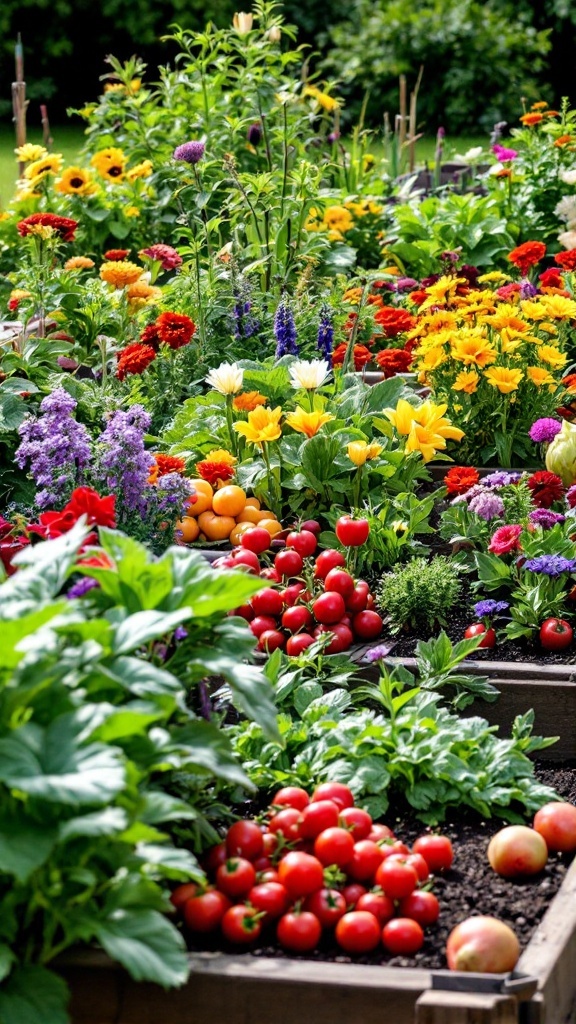
Raised bed gardening is a popular way to grow plants efficiently. This method involves creating elevated plots that are often filled with rich soil, perfect for a variety of plants. The image shows a vibrant garden filled with colorful flowers and healthy vegetables, including a bounty of ripe tomatoes.
The arrangement of plants is important. By grouping flowers and vegetables, you can create a beautiful and productive garden. The colors from the flowers add charm, while the vegetables provide nourishment. Interplanting flowers with vegetables can attract beneficial insects, helping with pollination and pest control.
Consider the layout of your raised beds. They can be arranged in straight rows or in a more organic pattern. Paths between the beds allow easy access for planting, weeding, and harvesting. This setup minimizes soil compaction and makes gardening more enjoyable.
Don’t forget about the soil! Using high-quality soil mixes can make a big difference in plant health. Ensure the beds drain well to prevent waterlogging, which can harm roots. Regular maintenance, like adding compost and mulch, keeps everything thriving.
Container Gardening for Small Spaces
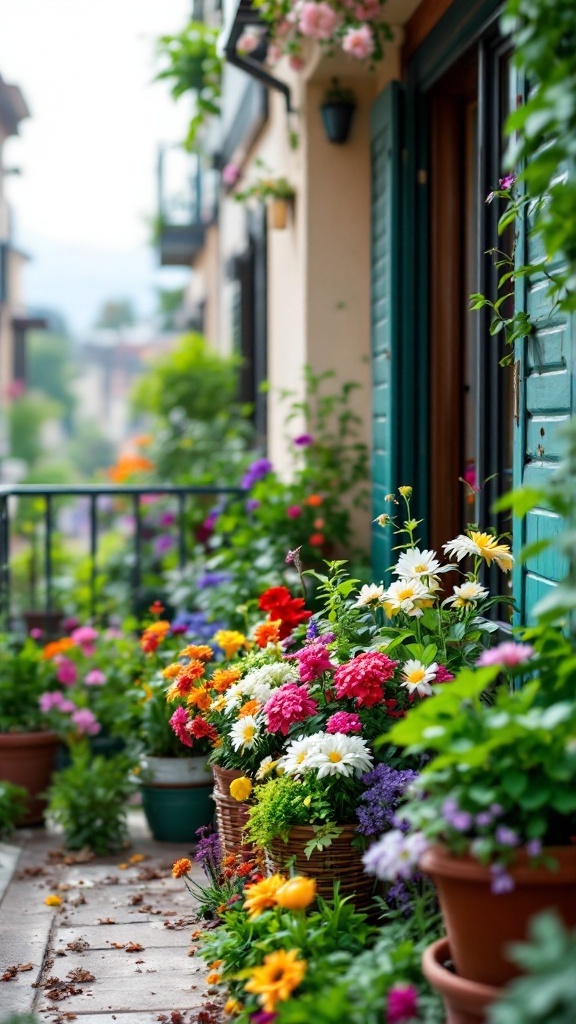
Container gardening is a fantastic way to make the most of a small space. The image shows a charming balcony filled with vibrant flowers in pots. Each flower pot adds a splash of color, creating a lively atmosphere.
Using containers allows you to grow a variety of plants without needing a large yard. You can easily rearrange pots to find the best sunlight for your plants. This flexibility is perfect for those with limited space.
Choose containers of different sizes and shapes to add visual interest. Mixing flowers with some herbs or small vegetables can also maximize your gardening efforts. Imagine having fresh basil for your cooking right at your doorstep!
Container gardening not only beautifies your space but also provides a sense of satisfaction. Watching your plants grow and thrive brings joy. Whether you’re a seasoned gardener or a beginner, this method can work for you.
Companion Planting Strategies
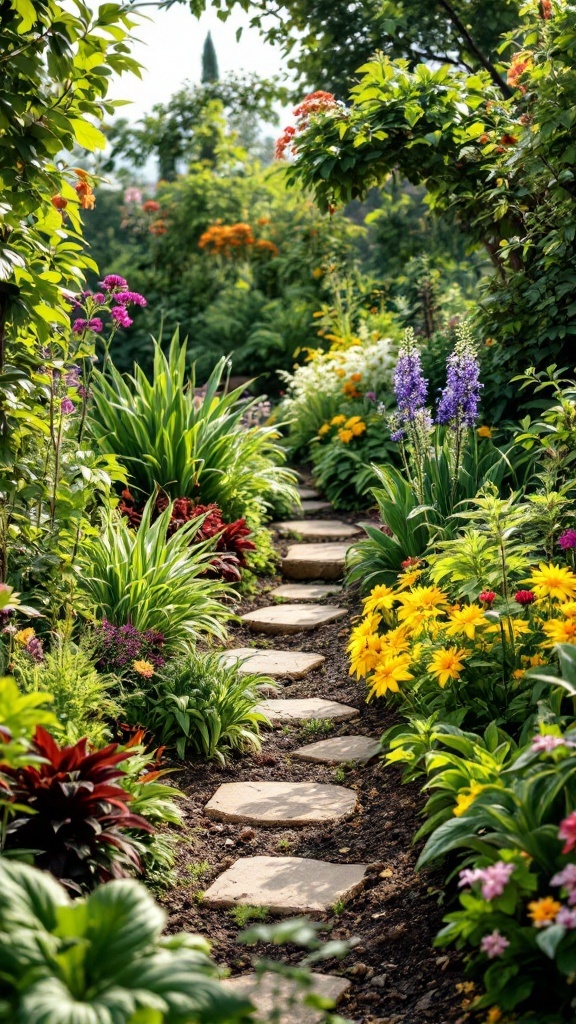
Companion planting is a fun way to maximize your garden’s potential while making it visually appealing. The image shows a vibrant garden filled with colorful flowers and lush greenery. Different plants coexist harmoniously along a winding stone path, inviting you to explore the variety. This layout exemplifies how companion planting can create a thriving ecosystem.
When you plant flowers and vegetables together, they can help each other grow. For instance, marigolds are known to repel pests, making them great companions for various vegetables. Meanwhile, certain herbs like basil can enhance the flavor of nearby tomato plants. Positioning these plants strategically can lead to healthier crops.
Consider mixing colors and heights for a beautiful display. Taller plants can provide shade for those that prefer cooler conditions. This layering not only looks good but can also protect more delicate plants from harsh sun. Keeping your companion plants diverse helps prevent diseases and pests from taking over.
As you plan your garden, think about what combinations work best. A mix of flowers and vegetables not only boosts productivity but also creates a cheerful atmosphere. The key is to pay attention to the needs of each plant, ensuring they complement each other in your homesteading space.
Edible Landscaping Ideas
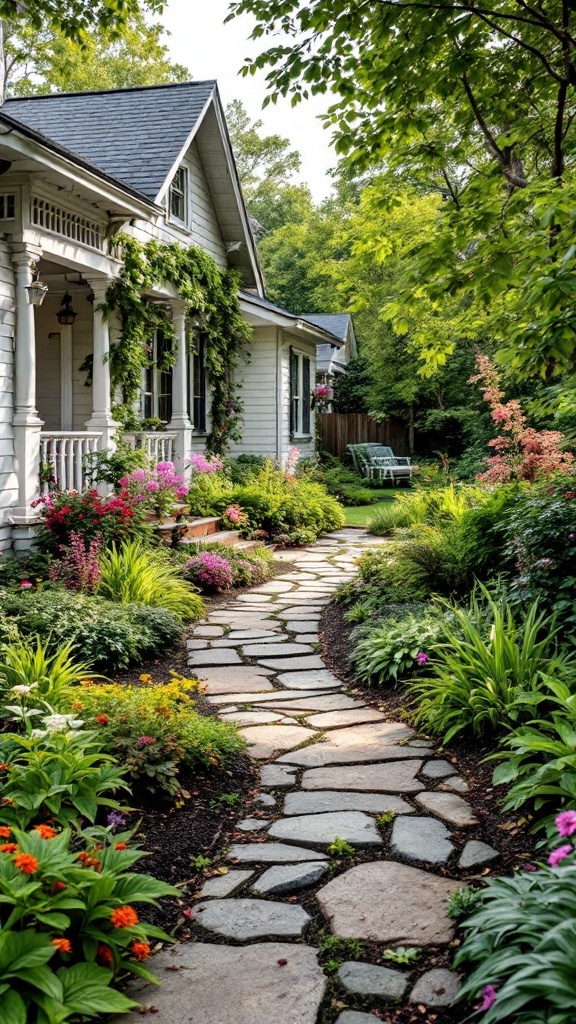
Creating an edible landscape can turn your garden into a feast for both the eyes and the palate. The image shows a charming pathway leading up to a lovely home, surrounded by vibrant plants and flowers. This setting offers inspiration for combining beauty with practicality.
Start by integrating edible plants among your ornamental ones. Consider planting herbs like basil or rosemary near the front entrance. They not only smell fantastic but also look great in your garden. Vegetables like kale and lettuce can be tucked into flower beds, bringing a pop of green that complements colorful blooms.
Also, think about fruit-bearing plants. Berry bushes can add color while providing fresh snacks. A fruit tree like a dwarf apple can serve as both a focal point and a food source. With a little planning, your garden can be a lush retreat that offers tasty treats all season long.
Square Foot Gardening Basics
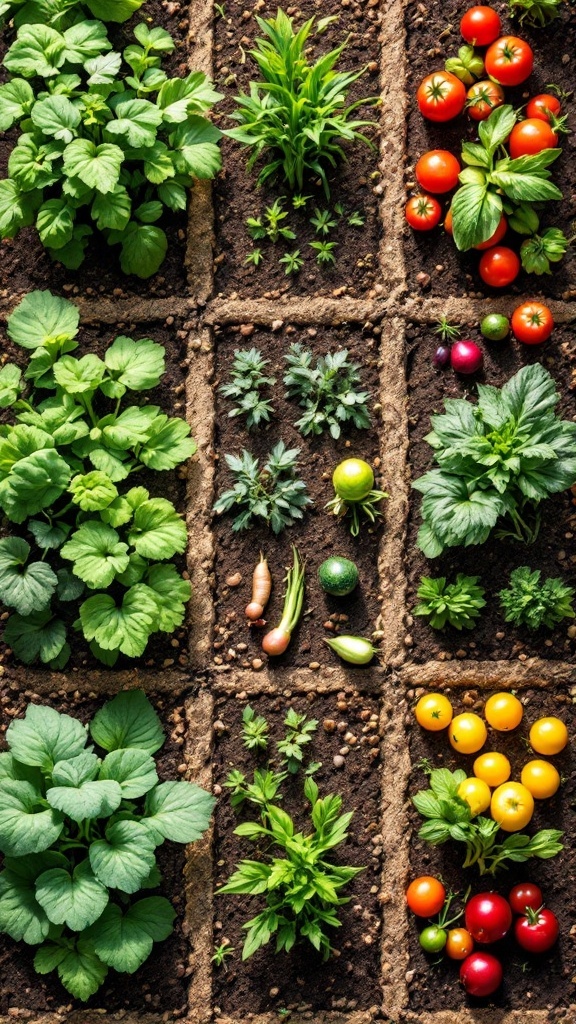
Square foot gardening is a fun and efficient way to grow your own food. The image shows a well-organized garden layout, divided into neat squares. Each square has a variety of plants, showcasing how diverse your garden can be.
The layout is perfect for maximizing space. Instead of rows, using square feet allows you to plant different crops in small sections. This is especially handy for smaller yards or urban gardening.
In the photo, you can see different types of vegetables and herbs planted closely together. This not only saves space but also helps with companion planting, where certain plants benefit each other.
Starting your square foot garden is easy. You can use wooden frames or even mark off sections in your soil. Each square can hold one type of plant, or you can mix them up. Just remember to plan your garden based on sunlight and watering needs.
Pollinator-Friendly Garden Design
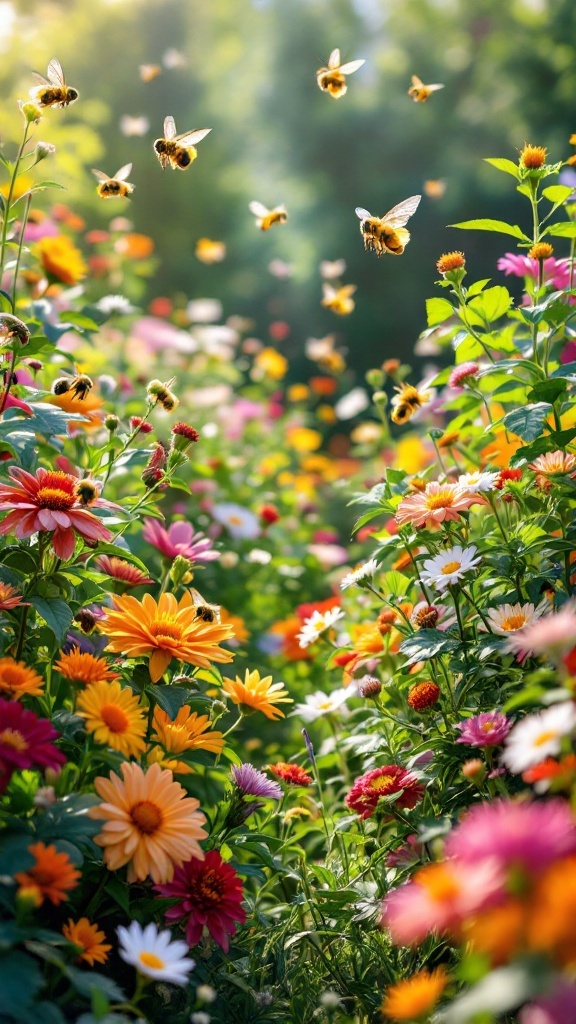
Creating a pollinator-friendly garden is a wonderful way to support local wildlife while enjoying vibrant blooms. The image captures a lively scene filled with colorful flowers and buzzing bees. This delightful tableau not only brightens up your space but also attracts essential pollinators.
To design your garden, think about incorporating a variety of flowers that bloom at different times. This ensures that pollinators have a reliable source of food throughout the seasons. Plants like sunflowers, daisies, and zinnias are fantastic choices. Their bright colors and scents draw bees and butterflies, making your garden a bustling hub of activity.
Another tip is to create clusters of flowers rather than scattering them across your garden. This makes it easier for pollinators to find food and encourages them to stay longer. Plus, the mix of colors and textures can create a stunning visual impact.
Don’t forget to include some native plants. They are often better suited to your local environment and provide the best resources for native pollinators. Adding a water source, like a shallow dish or birdbath, can also be beneficial.
Shade Garden Opportunities
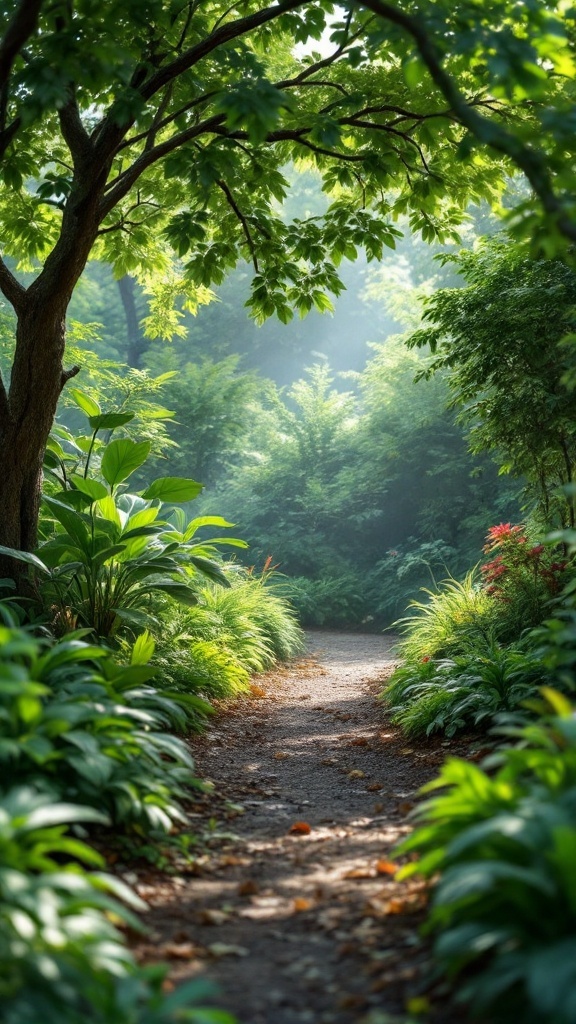
Creating a shade garden can be a wonderful way to utilize those cooler, darker areas in your yard. This image shows a beautiful path winding through lush greenery, showcasing the potential of shade gardening. The vibrant plants on either side of the path thrive in low-light conditions, making this space inviting and serene.
When planning your shade garden, think about the types of plants that work well in these conditions. Ferns, hostas, and astilbes can add texture and color. Including a variety of heights and leaf shapes can make the garden visually interesting.
Incorporating a pathway like the one in the image can help guide visitors through your garden. It connects different sections and allows for easy access to care for the plants. Adding seating areas can transform it into a cozy retreat.
Don’t forget to consider the lighting at different times of the day. Some areas may receive dappled light, while others may be completely shaded. This will influence your plant choices and layout. The goal is to create a balanced space that feels alive and vibrant.
Garden Zones for Efficient Layout
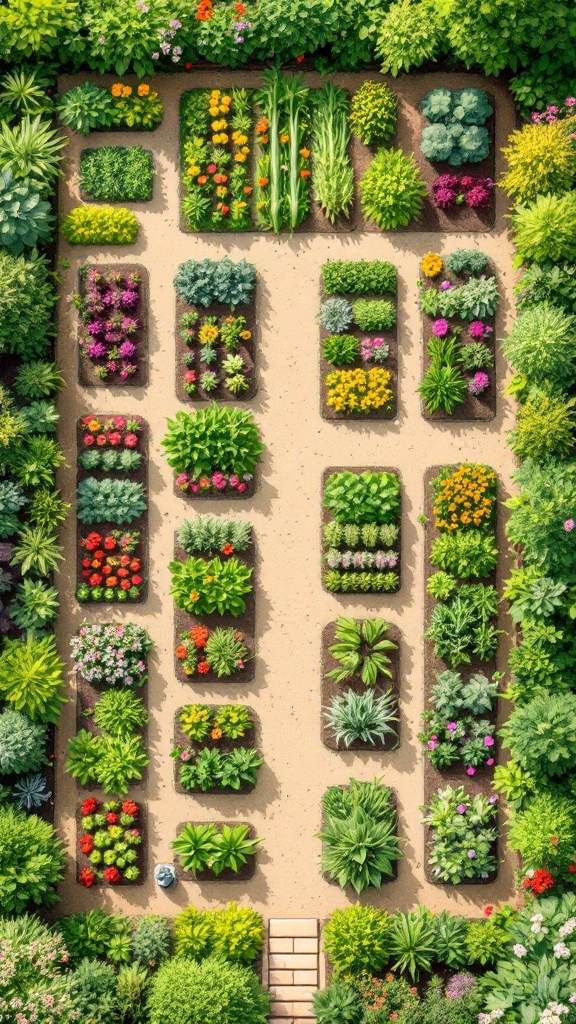
Creating a garden layout is all about zoning. The image shows a well-organized garden divided into distinct areas, each filled with colorful plants and vegetables. This layout helps in planning what to plant where, making it easier to care for your garden.
The different zones can serve various purposes, like growing herbs, vegetables, or flowers. It’s important to consider the sunlight and water needs of each plant type. For instance, sun-loving crops can be placed in areas that receive the most direct sunlight.
Having clear zones also makes maintenance easier. You can assign specific tasks to each area, like watering or weeding. This method streamlines your gardening efforts and can lead to a more productive garden overall.
Incorporating flowers among the vegetables, as seen in the image, can attract pollinators and beneficial insects. This adds beauty to your garden while supporting biodiversity. Creating zones allows you to play with colors and plant combinations, making your garden not just functional but also visually appealing.
Wildlife-Friendly Garden Features
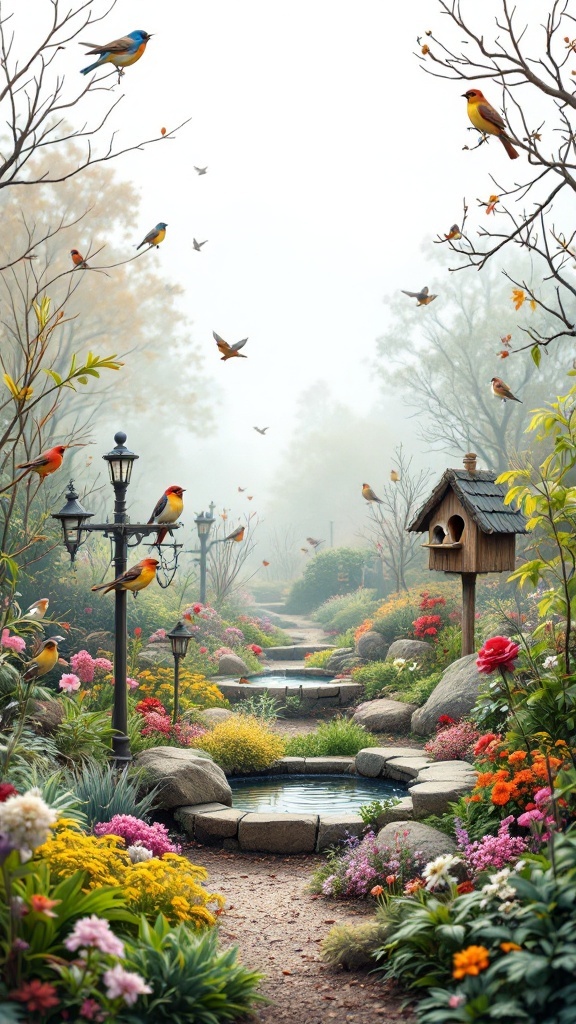
A wildlife-friendly garden is a wonderful way to support local ecosystems. The image shows a vibrant garden filled with colorful flowers, inviting various birds to visit. It features pathways that guide visitors through lush greenery, creating a serene atmosphere.
The presence of birdhouses adds a charming touch. These homes provide shelter for birds, encouraging them to take up residence. The gentle sounds of chirping and the sight of fluttering wings can make any garden feel alive.
Water features are essential too. The small ponds in the image offer a refreshing drink for birds and other wildlife. They also create a relaxing environment, where you can sit back and enjoy nature’s beauty.
Incorporating native plants is another great idea. They attract local pollinators, supporting biodiversity. A variety of blossoms ensures that there’s always something blooming, providing food and shelter year-round.
Keyhole Garden Approach
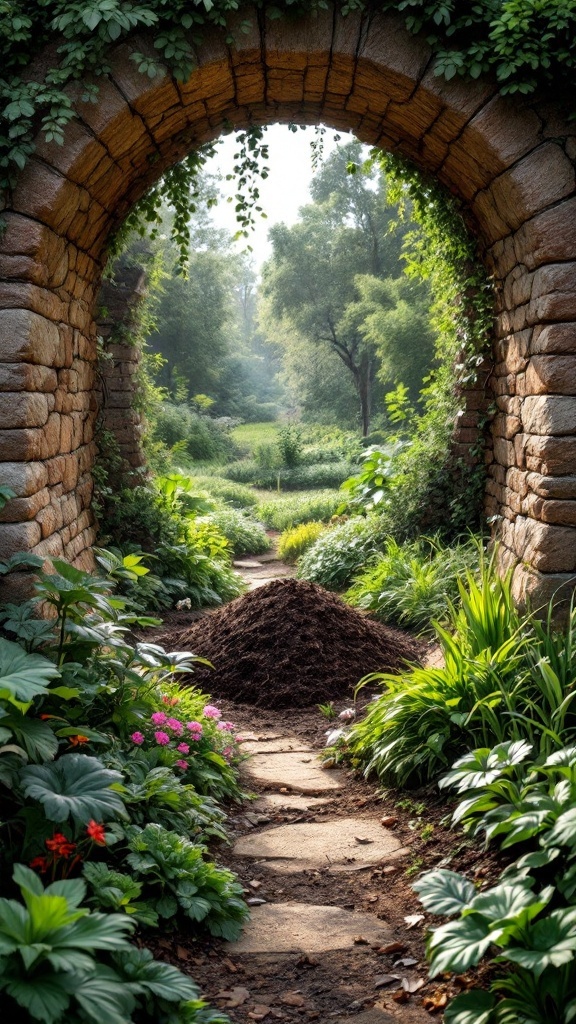
The keyhole garden is a unique and efficient layout that makes gardening accessible and productive. This design typically features a circular bed with a path leading to the center, making it easy to reach all parts of the garden.
In the image above, you can see a lovely archway that frames a pathway leading into a lush garden. The vibrant greenery on both sides creates a welcoming atmosphere. The centerpiece of this scene is a pile of mulch, which is essential for keeping the soil healthy and retaining moisture.
This approach not only maximizes space but also allows for better composting. By placing compost in the middle section, you can feed your plants with nutrients as they grow. It’s a fantastic way to create a self-sustaining garden.
As you plan your keyhole garden, think about the types of plants you want to grow. Consider herbs and vegetables that can thrive together. It’s a fun way to experiment while ensuring a beautiful layout!
Seasonal Rotation Layout
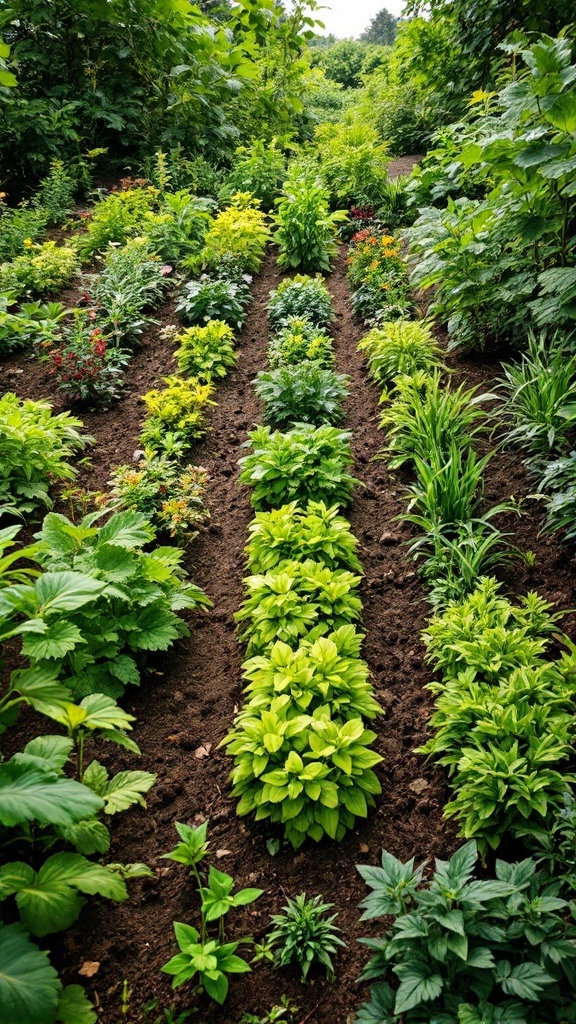
When planning your homesteading garden, a seasonal rotation layout can work wonders. This method not only keeps the soil healthy but also boosts your harvest. In the image, you can see neat rows of various plants, showcasing how different types can thrive together.
Each row has a distinct color and texture, making the garden visually appealing. You might notice how plants are spaced adequately to allow sunlight and air to circulate. This spacing helps prevent disease and promotes growth.
Think about rotating crops each season. For example, you can plant leafy greens in spring, followed by beans in summer, and root vegetables in fall. This rotation helps replenish nutrients in the soil and reduces pests.
To keep your garden thriving, pay attention to companion planting. Some plants naturally repel pests or attract beneficial insects. Mixing these in your seasonal layout can enhance your garden’s health.
Kitchen Garden Essentials
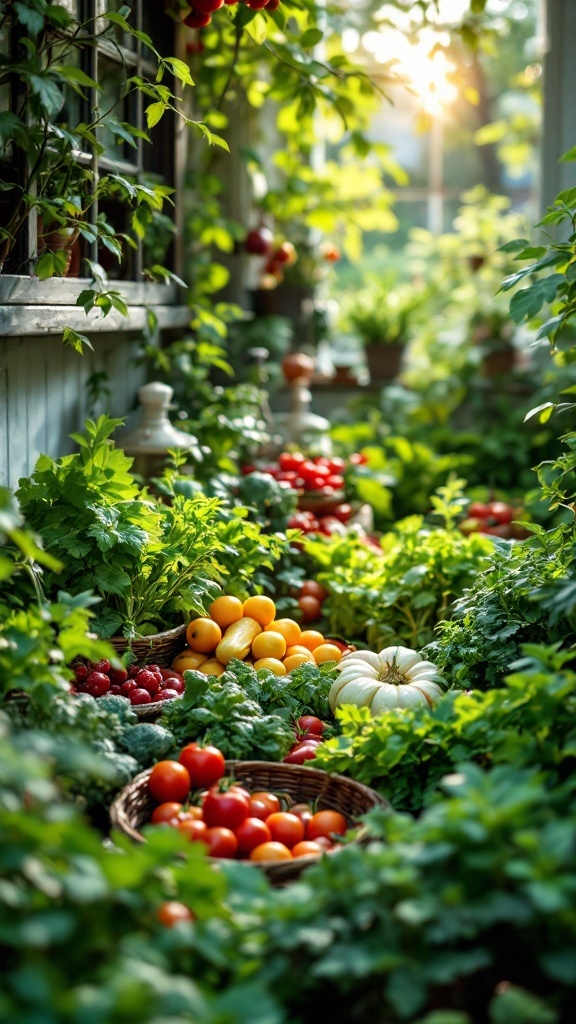
In a homesteading garden, a kitchen garden is a treasure. This space is packed with vibrant produce, ready for your meals. The image here shows a lush scene filled with ripe tomatoes, bright oranges, and fresh greens, all nestled in earthy baskets. This setup not only looks inviting but also showcases the bounty that can spring from your own backyard.
When planning your kitchen garden, think about what you love to cook. Tomatoes are a fantastic choice, as seen in the image. They thrive in sunny spots and are perfect for sauces, salads, and salsas. Incorporating a variety of herbs like basil and parsley can enhance your dishes, adding fresh flavor right when you need it.
Another great addition is squash, which can grow well alongside tomatoes. These plants can share space efficiently, making the most of your garden layout. The image captures the essence of a well-planned kitchen garden, where every plant has its purpose and contributes to a vibrant, edible landscape.
Backyard Orchard Planning
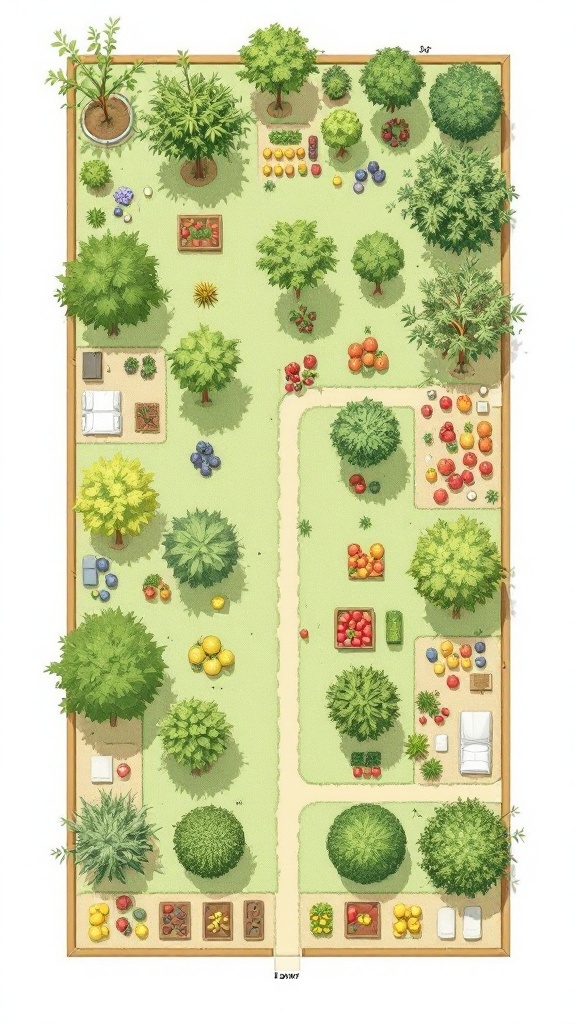
When planning a backyard orchard, it’s helpful to visualize your space. The image shows a well-organized garden layout, filled with various fruit trees and plant beds. You can see trees like apple, lemon, and peach, each set apart to provide ample sunlight and airflow.
One great feature is the pathway that runs through the center. This makes it easy to access your plants for maintenance or harvesting. Around the trees, you can spot colorful fruits and vegetables growing in raised beds, making it a productive area.
Consider the space requirements for each type of tree. Some need more room than others, so think about how large they will grow. You can also mix in smaller plants or herbs to maximize your garden’s productivity.
Planting a variety of fruits can also help with pollination. This layout shows a nice balance of different species, which can attract beneficial insects. Planning ahead like this will lead to a fruitful harvest season!
Community Garden Collaboration
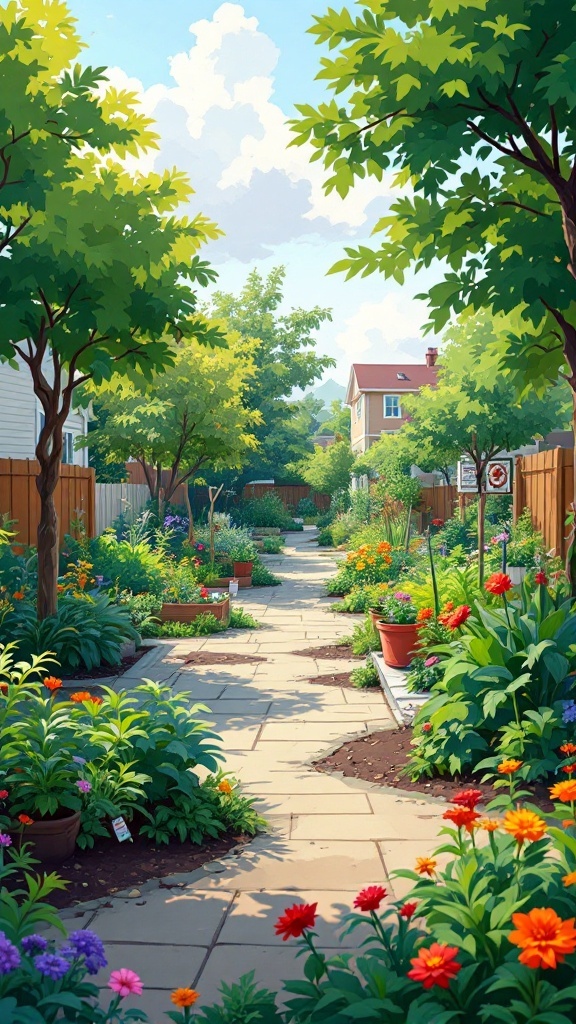
Community gardens are a wonderful way to bring people together. In the image, you can see a vibrant garden space that invites neighbors to join in the fun of planting and growing. The colorful flowers and neatly arranged plants create a welcoming atmosphere.
This shared space not only provides fresh produce but also fosters friendships. People can collaborate on garden designs, share tips, and learn from one another. The path in the image symbolizes the journey of community building through gardening.
Such collaborations can lead to creative garden layouts. Groups can decide on themes, like native plants or vegetable patches, making the garden a unique reflection of everyone’s ideas. Plus, working together makes the labor lighter and more enjoyable!
Low-Maintenance Garden Design
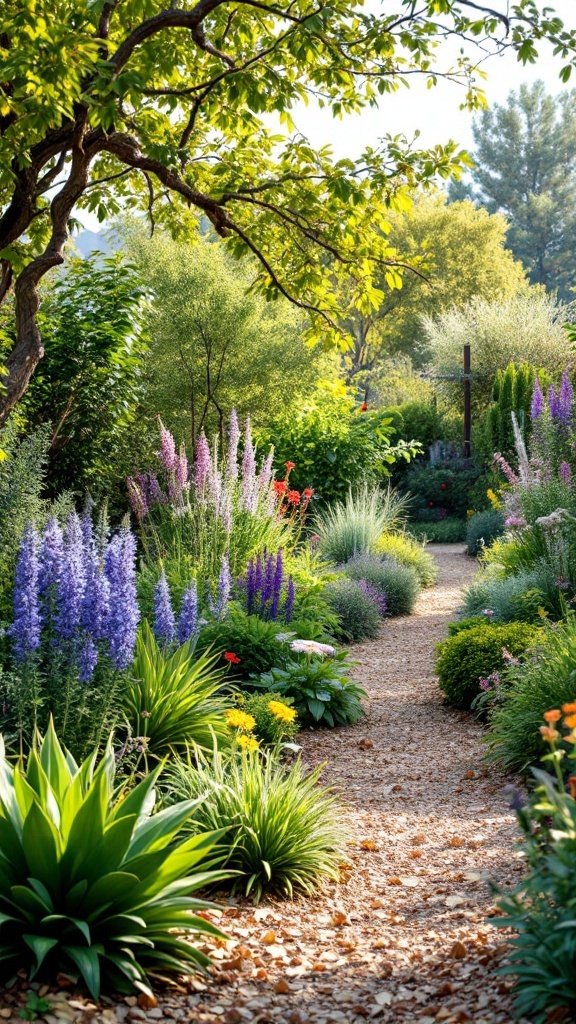
Low-maintenance garden designs are perfect for anyone who loves plants but doesn’t want to spend hours tending to them. This image beautifully showcases a serene garden path lined with vibrant flowers and lush greenery. The pathway invites you to stroll through a peaceful oasis, where nature takes center stage.
The colorful flowers, including tall purple delphiniums and cheerful yellow daisies, offer a burst of color without needing constant care. Mixing perennials and hardy shrubs can create a garden that thrives year after year with minimal effort. This approach not only saves time but also ensures that your garden looks stunning in every season.
Using a gravel path like the one shown adds texture and helps with drainage, making it easier to maintain. It’s also a practical choice, as it prevents mud and weeds from becoming a hassle. The strategic placement of plants around the path provides a natural, inviting atmosphere while allowing for easy access and maintenance.
Incorporating native plants is another fantastic idea. They are well-adapted to the local climate and require less water and care. This approach can lead to a more sustainable garden that benefits local wildlife and pollinators.
Overall, this image illustrates how a low-maintenance garden can be both beautiful and functional. With the right design choices, you can create a space that allows you to enjoy your garden without the stress of constant upkeep.
Garden Pathway Inspiration
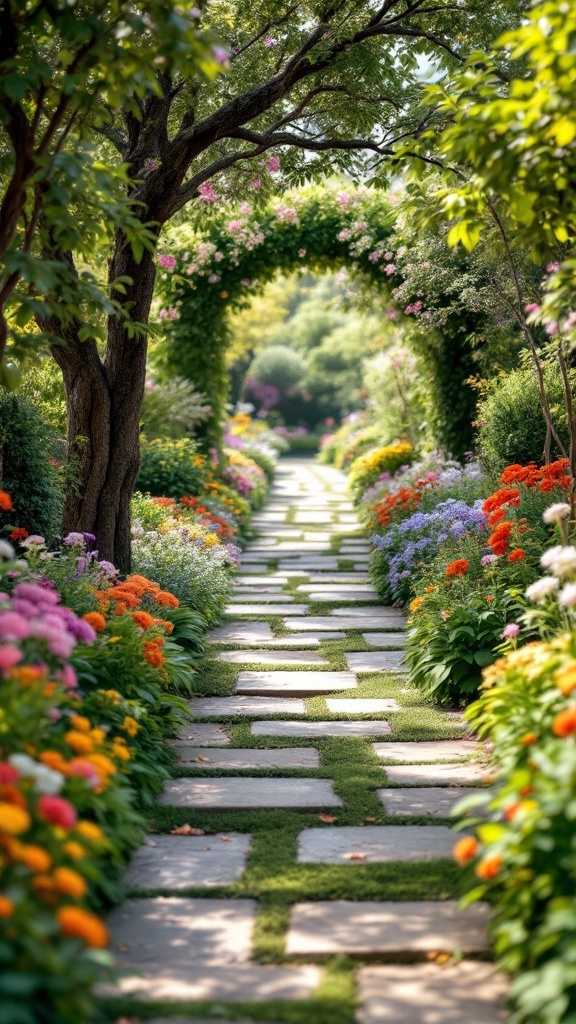
Creating a welcoming garden pathway can transform your outdoor space into a peaceful retreat. The image showcases a beautiful walkway lined with vibrant flowers and greenery. The stones are perfectly arranged, leading the eye down a scenic route. This kind of layout not only adds charm but also invites exploration.
When planning your garden pathways, consider the materials you want to use. Stone, gravel, or even wood can each bring a different feel. The contrast of the colorful blooms against the neutral stones creates a delightful visual effect. Adding arches or trellises covered in climbing plants can enhance the beauty and create a sense of enclosure.
Think about the width of your pathway too. A wider path allows for leisurely strolls and can accommodate wheelbarrows or other gardening tools. Incorporating curves can make the space feel more natural, guiding visitors gently through your garden’s various sections.
